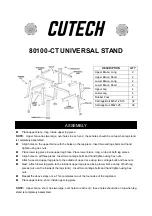
LTO Tape Drive User’s Guide
1 - Product Overview
10400934-001
©2020 Overland-Tandberg
17
If the server’s net (compressed) data rate is between two of the preceding native data rates,
the drive calculates the appropriate data rate at which to operate. Speed matching
dramatically reduces backhitch, the condition that occurs when a tape stops, reverses, and
restarts motion due to a mismatch between the data rates of the server and the drive.
Channel Calibration
System performance is further optimized by a feature that is called channel calibration, in
which the drive automatically customizes each read/write data channel to compensate for
variations in such things as the recording channel’s transfer function, the media, and
characteristics of the drive head.
Encryption
The IBM LTO tape drive all support the T10 Defined encryption capabilities for AME and out-
of-band encryption.
Minimal latency for encryption setup is necessary. However, host transfer through put is not
affected. The hardware encryption and decryption core and control code resides in the LTO
tape drive. It has the following characteristics:
•
It utilizes AES-256 standards-based strong symmetric data encryption with GCM
formatting.
•
It utilizes a secret 256-bit Data Key to perform the encryption and decryption which is
programmed to the hardware in a secure fashion by the drive control firmware. The key
is not retrievable in any manner from the encryption core (even by the drive firmware
which programmed it) and is automatically erased during the eject process.
•
It performs the encryption after host data is received and compressed and thus does not
alter the compression ratio of incoming data. Encryption is done at full line speed in
hardware in the tape device with no impact on throughput performance.
•
During write operations, it automatically decrypts after encrypting to provide on-the-fly
checking that data is in fact encrypted correctly.
•
No host processor MIPS are required as for software host-based encryption solutions.
Inhibiting Firmware Down-Leveling
The drive provides the capability to prevent loading and installing drive microcode by way of a
Field Microcode Replace (FMR tape) if the firmware level contained in the FMR tape is older
than the code level already installed. This option is controlled by the host application. No
checking is done if the firmware level is loaded by way of the host interface or the library
interface.
157.5 138.52
135.0 120.11
112.0 101.46
Speed matching data rates (MB/sec)
Generation 8 media
Generation 7 media
















































